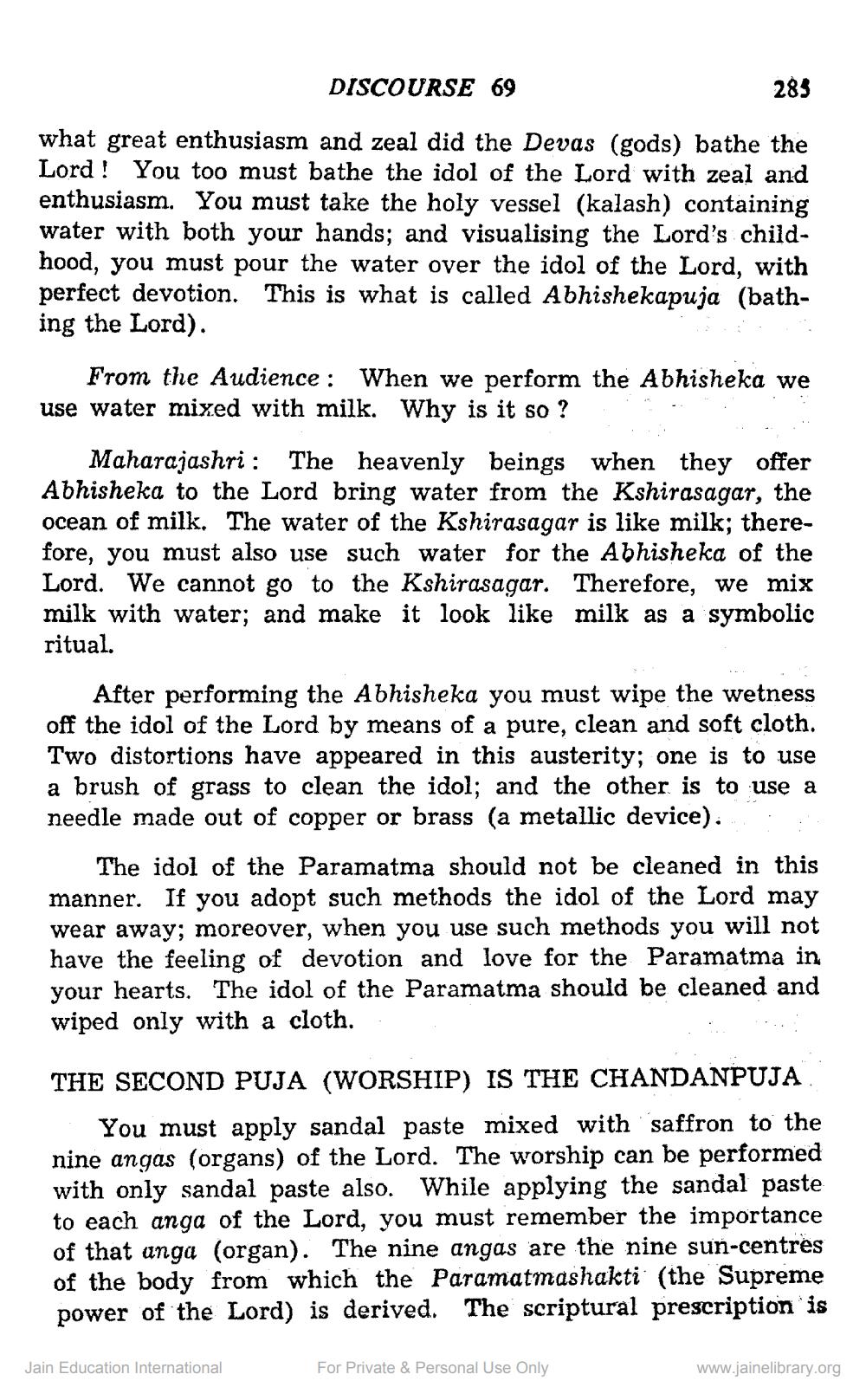________________
DISCOURSE 69
285
what great enthusiasm and zeal did the Devas (gods) bathe the Lord! You too must bathe the idol of the Lord with zeal and enthusiasm. You must take the holy vessel (kalash) containing water with both your hands; and visualising the Lord's childhood, you must pour the water over the idol of the Lord, with perfect devotion. This is what is called Abhishekapuja (bathing the Lord).
From the Audience: When we perform the Abhisheka we use water mixed with milk. Why is it so ?
Maharajashri: The heavenly beings when they offer Abhisheka to the Lord bring water from the Kshirasagar, the ocean of milk. The water of the Kshirasagar is like milk; therefore, you must also use such water for the Abhisheka of the Lord. We cannot go to the Kshirasagar. Therefore, we mix milk with water; and make it look like milk as a symbolic ritual.
After performing the Abhisheka you must wipe the wetness off the idol of the Lord by means of a pure, clean and soft cloth. Two distortions have appeared in this austerity; one is to use a brush of grass to clean the idol; and the other is to use a needle made out of copper or brass (a metallic device).
The idol of the Paramatma should not be cleaned in this manner. If you adopt such methods the idol of the Lord may wear away; moreover, when you use such methods you will not have the feeling of devotion and love for the Paramatma in your hearts. The idol of the Paramatma should be cleaned and wiped only with a cloth.
THE SECOND PUJA (WORSHIP) IS THE CHANDANPUJA
You must apply sandal paste mixed with saffron to the nine angas (organs) of the Lord. The worship can be performed with only sandal paste also. While applying the sandal paste to each anga of the Lord, you must remember the importance of that anga (organ). The nine angas are the nine sun-centres of the body from which the Paramatmashakti (the Supreme power of the Lord) is derived. The scriptural prescription is
Jain Education International
For Private & Personal Use Only
www.jainelibrary.org




